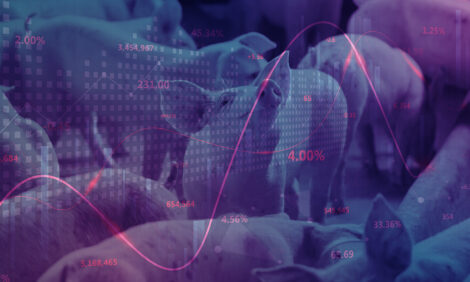



Growth Promotion Trial: Alphamune<SUP><FONT SIZE="1">TM</FONT></SUP> G versus Salinomycin
By Alpharma Animal Health - This trial reports on performance improvements seen in nursery pigs given Alphamune G feed supplementation compared to pigs treated with Salinomycin as a growth promoter.
SUMMARY OF TRIAL SET UP:
Location: European Union
Timing of trial: 2003
Number and groups of pigs:
212 pigs divided into 3 groups. 11-12 pigs were allocated
per group. 6 replications were done.
Farm conditions:
The trial was done under the same practical conditions
with feed and husbandry conditions as was the routine
practice
Purpose of evaluation:
Performance results of AlphamuneTM G at 500 g/tonne compared
to Salinomycin, used at 60 ppm as antibiotic growth
promoter and an untreated control group
Trial period:
Day 1: the day after weaning with pigs weighing ± 8 kg
and aged 28-29 days. The trial ended with pigs aged of
± 67 days and with an end live weight of ± 19 kg.

Key observations:
An improved difference of 32 g in ADG( Average Daily Gain) was found between supplementation with AlphamuneTM G and the control group
Some numerical improvement on ADG was found between supplementation with AlphamuneTM G and the group supplemented with Salinomycin as growth promoter
AlphamuneTM G provides weight gain performance comparable with a growth promoter

Key observations:
A numerical improvement on FCR of 130 g was found between supplementation with AlphamuneTM G and the group supplemented with Salinomycin as growth promoter
OVERALL CONCLUSIONS
AlphamuneTM G was shown in this demonstration trial, to be a valid alternative feed supplement in starter pigs for an antibiotic growth promoter like salinomycin, when supplemented at 500 g per tonne of finished feed
- Outperforming on Weight Gain
- Outperforming for Feed Conversion Rate
AlphamuneTM G was shown in this trial, to be a valid feed supplement for starter pigs, when supplemented at 500 g per tonne of finished feed compared to an untreated group
- With an improved Weight Gain
- And an improved Feed Conversion Rate
Source: Alpharma Animal Health - September 2004






